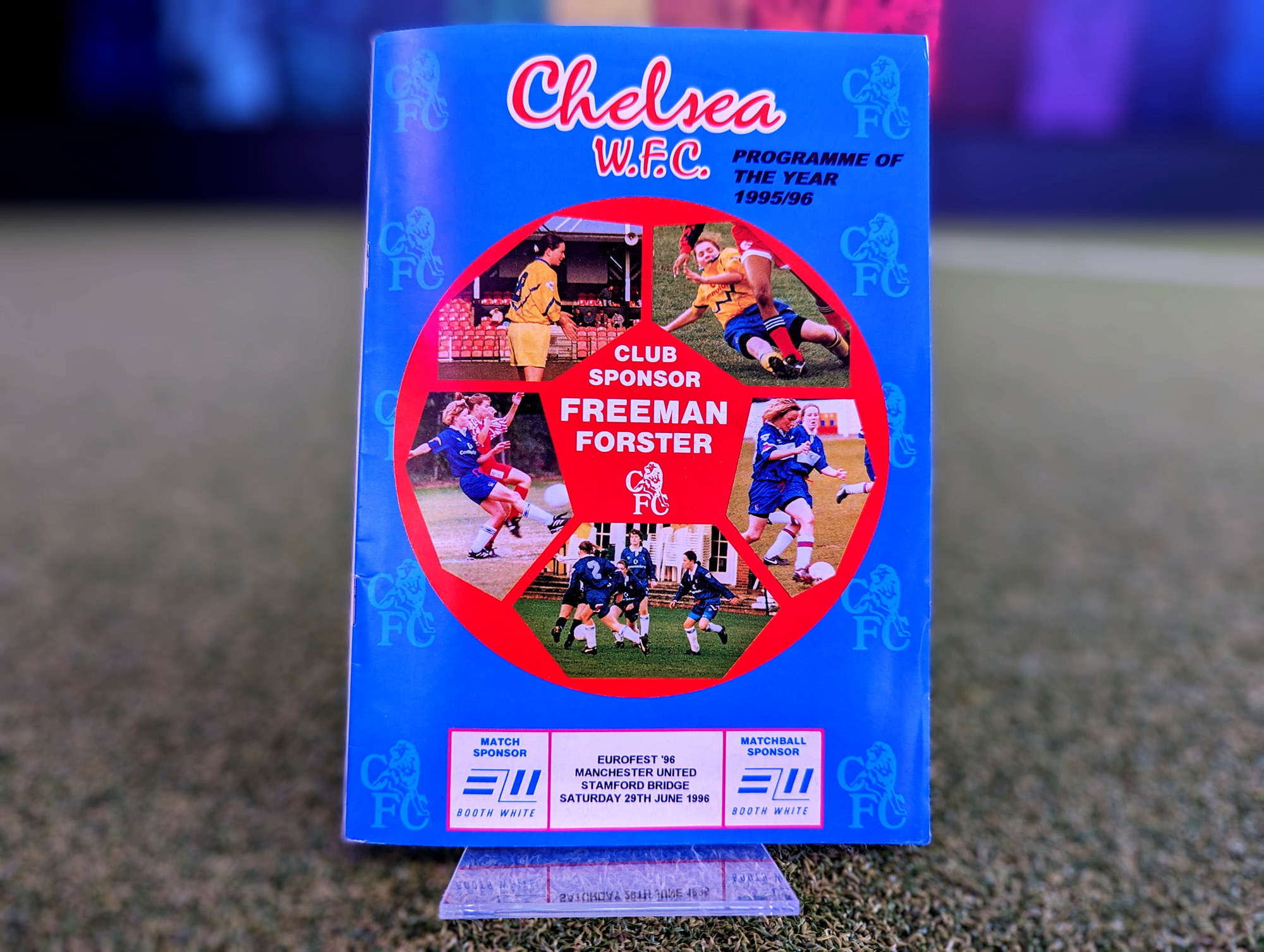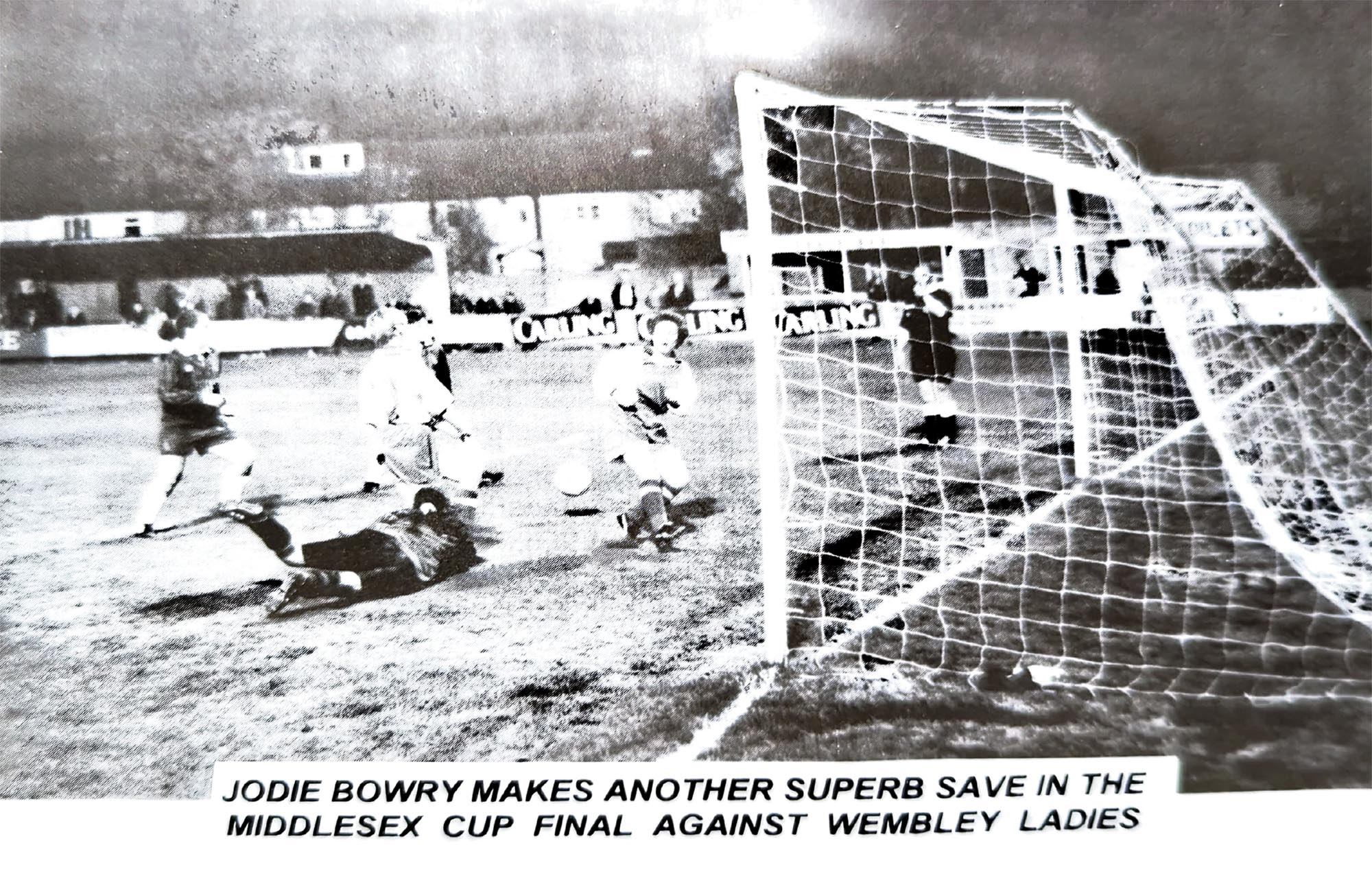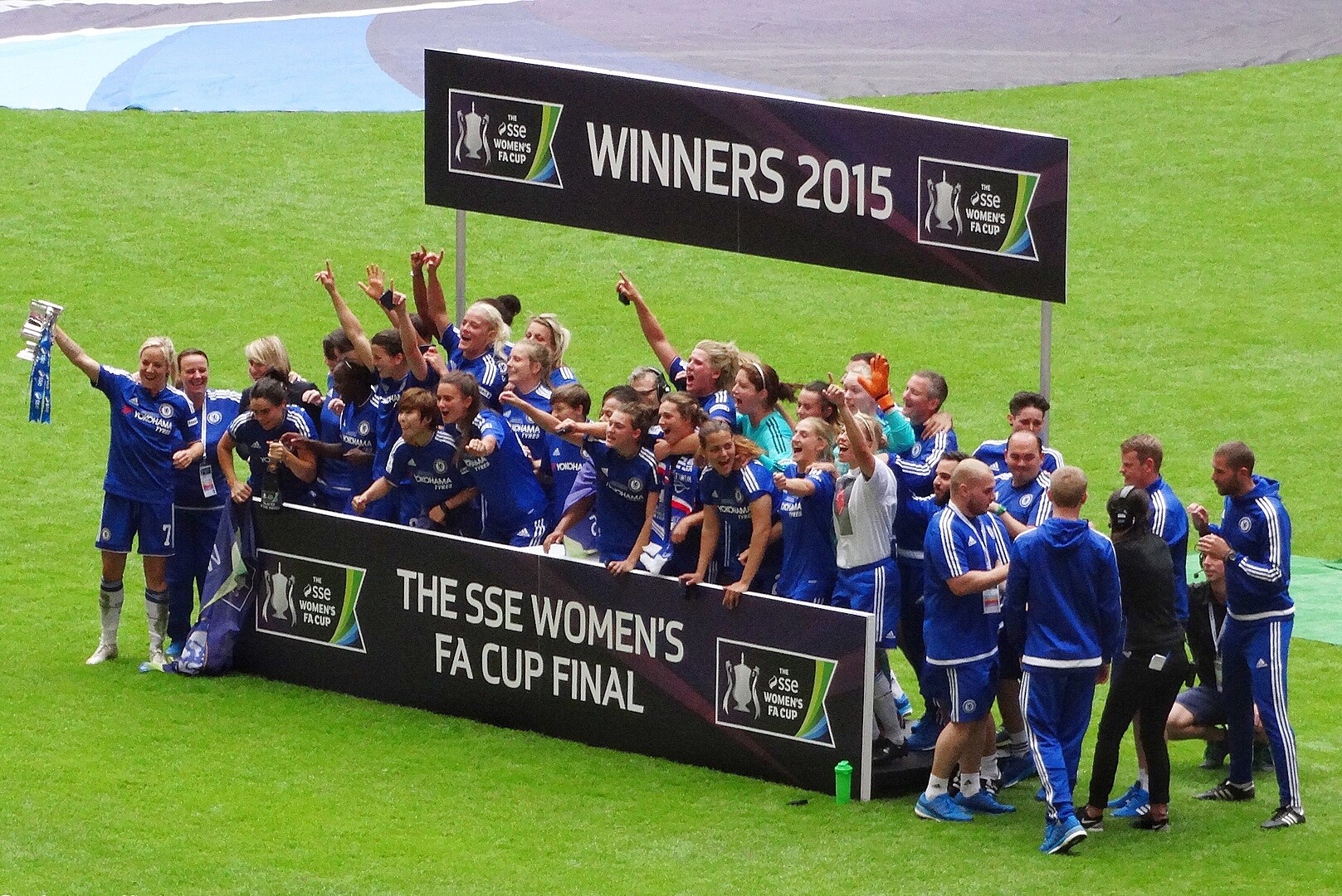Object of the Week: Chelsea WFC v MUFC Women programme, 1996 Calendar
12 May 2023
With Chelsea Women looking to defend their WFA Cup Final title against Manchester United Women this weekend, we have delved into the archive to look at an earlier game between these two sides.
In 1996 they met at Stamford Bridge as part of Eurofest 96, an event held the day before the final of the men’s 1996 European Championship at Wembley.
We have looked at the match programme to see what it tells us about these two clubs and reflect on how things have changed in women’s football since the 1990s.
Were they top-flight clubs then?
No – while young fans may come to expect to these teams to be always in the top flight, it was very different in 1996.
The most successful women’s team did come from London, but it wasn’t Arsenal or Chelsea. Instead, Croydon did the double, winning the FA National League ahead of Doncaster Belles and Arsenal, while they beat Liverpool in the FA Women’s FA Cup final.
By contrast, both Chelsea and Manchester United played in regional leagues – Chelsea finished mid-table in the Greater London Premier League while Manchester United won the North-West Regional League ahead of Oldham Athletic and Manchester Belle Vue.
So, the programme captures a moment when these teams were not seen as dominant forces – indeed the Chelsea programme was very proud of the team’s narrow defeat to Wembley in the Middlesex Cup final.
What were their origins?
In the 1970s a Chelsea side was created. They competed in the Women’s FA Cup, then the only national competition, and reached the quarter-final in 1980. In 1992, an official Chelsea side was created with manager Tony Farmer leading the team into the Third Division of the Greater London Women’s League.
Manchester United Supporters Club Ladies were formed in 1977. At first, they played charity and friendly games, before joining the newly formed Greater Manchester & District Women’s Football League in 1982. In 1989, the club approached Manchester United, who agreed to take them on, with the name changing to Manchester United Ladies.
What stands out in the programme?
Its striking to see how young the Chelsea team was. The team profiles include two sixteen-year-olds (Emily Staghorn and Kerry Smith) and two fifteen-year-olds (Jodie Bowry and Jenna Couch). But even younger was fourteen-year-old Casey Stoney – despite her age she had scored seven goals in nineteen games from midfield and had shown “great maturity in her first season of 11-a-side football.’
The programme’s prediction that she was ‘one for the future’ was spot-on, as she has gone onto have a hugely successful playing and managerial career, including leading Manchester United Women between 2018 and 2021.
What’s the significance of the game being held at Stamford Bridge?
This game was part of a trend across the 1980s and 1990s to promote women’s teams with occasional exhibition games at major English stadiums. Both clubs played their female counterparts before games between the men’s sides at Wembley. Manchester United Ladies played Newcastle United at Wembley before the 1996 Charity Shield while Chelsea WFC met Middlesbrough before the 1997 FA Cup Final. As well as this game at Stamford Bridge, Chelsea also played the Arsenal Women’s team in a charity game in 1995.
Who financed the teams?
At this time, funding came from the players, gate receipts, fundraising, or local sponsors. Manchester United goalkeeper/defender Debbie Philips was also the Club Treasurer and fund raiser. At Chelsea, one sponsor was estate agents Freeman Forster. As they explained to the programme, it was “run by two women and as a largely female run company, we hope that we are the right sponsors for a women’s football team.” Another key sponsor was the Chelsea Independent Supporters Association.
What happened to the clubs after this game?
The two sides went in very different directions in the following years. In 2001 Manchester United Ladies began a formal partnership with Manchester United. But in 2005, they were disbanded by the new owners of Manchester United who decided that it was not part of their “core business.” It was not until 2018 that the club formed a new side.
By contrast, Chelsea WFC went in the opposite direction. In 2005 they reached the FA Women’s Premier League and in 2011 became part of the new Women’s Super League. Under manager Emma Hayes, they have become one of the dominant sides in English women’s football, winning five top-flight titles and four Women’s FA Cup finals.
But with Manchester United Women aiming for an historic double in the WSL and the FA Cup, is the balance shifting?






